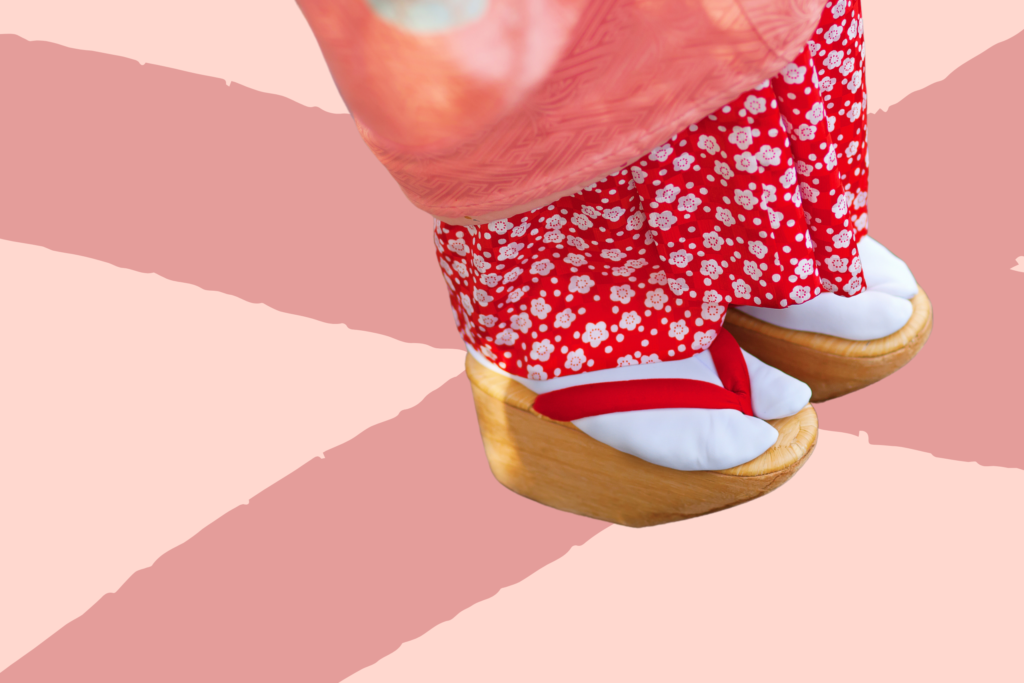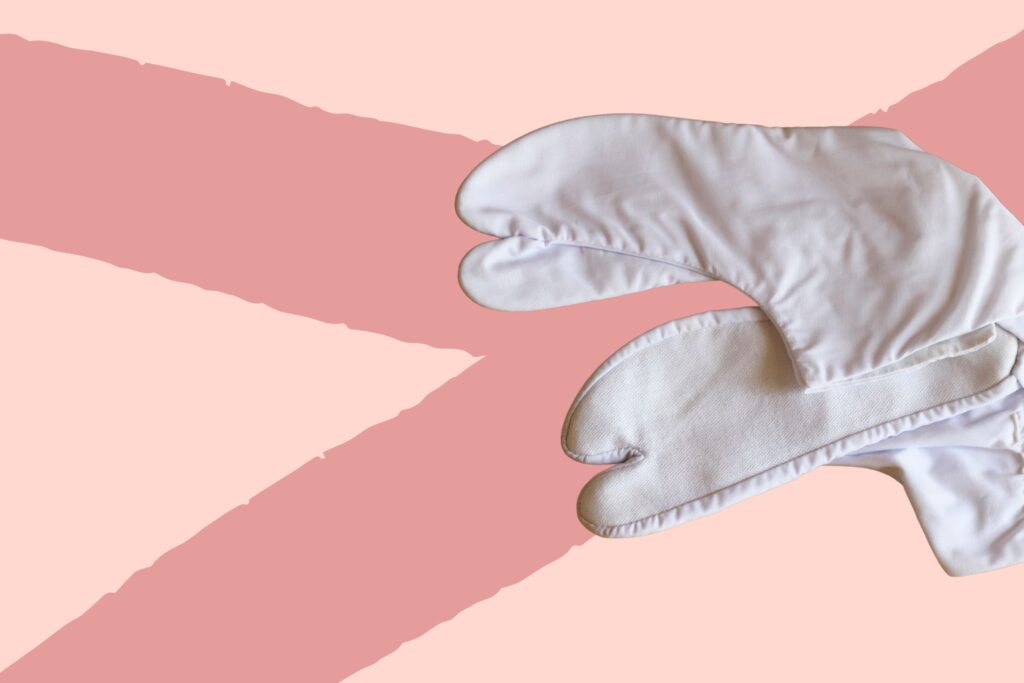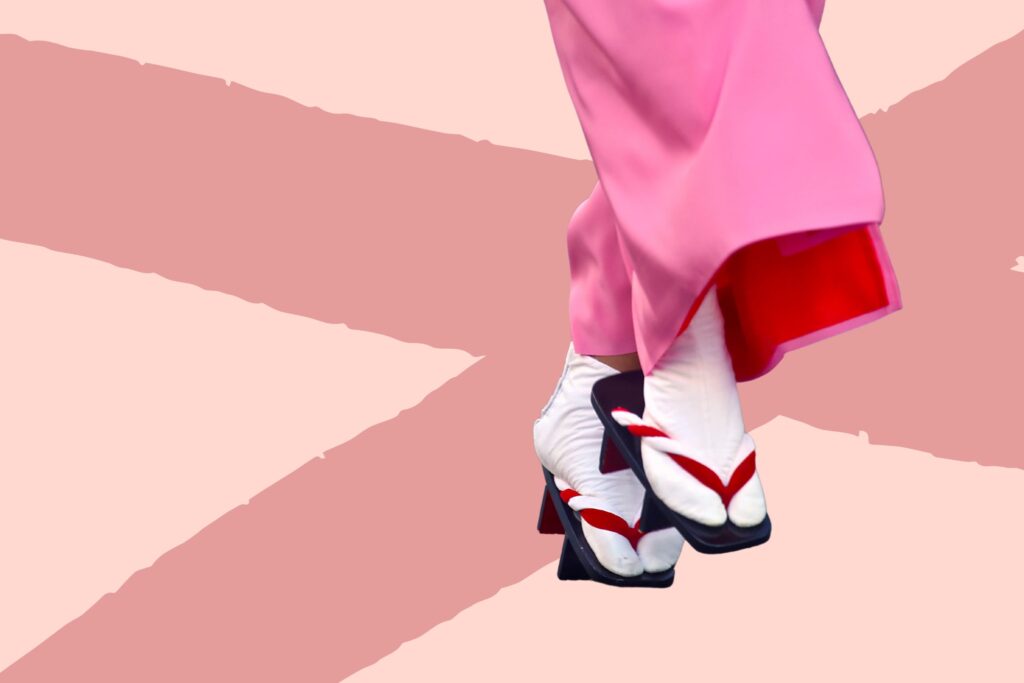Japanese tabi socks are a unique and distinctive style of sock that is traditionally worn in Japan. They have a divided toe, separating the big toe from the rest of the toes, and are commonly worn with zōri sandals or traditional Japanese shoes. Tabi socks have a rich history and cultural significance in Japan, having been worn for centuries.
In recent years, they have also become a modern fashion statement, with a variety of patterns, colors, and materials being used to create unique and stylish designs. Today we’re exploring both the traditional and modern style of tabi socks, their cultural significance, and their increasing popularity outside of Japan.
Traditional Tabi Socks
Tabi socks have been worn in Japan for hundreds of years and are a traditional part of Japanese clothing. Traditional tabi socks are made from natural materials like cotton, linen, or silk and are usually white or black in color. They are designed to be lightweight and comfortable, allowing the wearer to move around freely.
The key distinctive feature of the traditional tabi sock is its split-toe design. This design allows the big toe to be separated from the other toes, which is believed to make it easier to balance and walk. The split-toe design also helps to keep the foot cool and dry, which is particularly important in Japan’s hot and humid summer months.
Traditional tabi socks are typically worn with zōri sandals, which are a type of Japanese sandal made from straw or leather. The combination of tabi socks and zōri sandals is known as tabi-zōri and is a common sight in Japan. Traditional tabi socks are also often worn with traditional Japanese clothing such as kimono or yukata.
In addition to their practical use, traditional tabi socks are also considered to be an important part of Japanese culture. They are worn during traditional Japanese events and ceremonies, such as tea ceremonies and weddings, and are often considered to be a symbol of Japanese tradition and heritage.
Read: 10 travel tips you should know when visiting Japan

Modern Tabi Socks
In recent years, tabi socks have undergone a transformation into a modern fashion statement. Designers have started to experiment with different materials, patterns, and colors to create unique and stylish designs. Modern tabi socks now come in a variety of materials including cotton, wool, nylon, and synthetic fabrics. They can be found in an array of colors, ranging from bold and vibrant hues to more subtle and neutral tones.
One of the unique features of modern tabi socks is their creative designs. Many feature intricate patterns and prints, such as floral or animal prints, that add a touch of fun and playfulness to any outfit. Some modern tabi socks even have unique features such as glitter or sequins, which can add a touch of glamour to any ensemble.
Modern tabi socks are not just limited to traditional Japanese clothing or zōri sandals. They can be paired with a variety of different styles, including sneakers, boots, and even high heels. Many fashion influencers and celebrities have been seen wearing tabi socks in their outfits, which has helped to bring attention to the trend.
The evolution of tabi socks into a modern fashion statement has helped to make them more accessible to a wider audience. They can be worn with a variety of different outfits, allowing people to add a touch of Japanese style and culture to their wardrobe in a unique and fashionable way.

The Cultural Significance Of Tabi Socks
Tabi socks have been an integral part of Japanese oni masks culture for centuries, and their cultural significance can be seen in various aspects of Japanese life, from fashion to art to daily etiquette. Here are some of the key ways in which tabi socks hold cultural importance in Japan:
Traditional Clothing: Tabi socks are often worn with traditional Japanese clothing, such as kimono or yukata, and are an essential component of the overall outfit. They are typically worn with zori or geta sandals, and the split-toe design helps keep the sandals in place while also providing added comfort and flexibility. In this way, tabi socks serve as a functional and stylish accessory to traditional clothing.
Japanese Etiquette: In Japanese culture, it is customary to remove one’s shoes before entering a home or certain public spaces, such as temples or traditional restaurants. Tabi socks are often worn in these situations, as they provide a layer of protection for the feet while also allowing for easy removal and putting on of footwear. This practice reflects Japanese values of cleanliness and respect for shared spaces.

Martial Arts: Tabi socks are also commonly worn in martial arts, such as karate and judo, as they provide added grip and traction on the mat. In this context, the split-toe design allows for greater flexibility and dexterity in movements, which is essential in these disciplines.
Fashion: Tabi socks have become a popular fashion accessory in Japan and beyond, and have been incorporated into various modern and contemporary styles. They are often worn with sneakers or boots, and come in a range of colors and designs. In this way, tabi socks have become a symbol of Japanese fashion and culture, and reflect the country’s unique blend of tradition and innovation.
Overall, tabi socks hold a significant cultural importance in Japan, reflecting the country’s values of functionality, tradition, and innovation. Their versatility and practicality have made them an enduring part of Japanese life, and their influence can be seen in various aspects of Japanese culture and beyond.
Global Popularity Of Tabi Socks
In recent years, tabi socks have gained popularity outside of Japan and have become a global fashion trend. Here are some of the key factors that have contributed to their popularity:
Unique Design: Tabi socks are known for their distinct split-toe design, which sets them apart from other types of socks. This unique design has captured the attention of fashion enthusiasts around the world and has become a popular statement accessory in various fashion circles.
Celebrity Endorsement: Tabi socks have been endorsed by various celebrities, including fashion icons like Kanye West and Rihanna. Their endorsement has helped bring tabi socks to a wider audience and has cemented their place as a fashion-forward accessory.
Designer Collaborations: Tabi socks have been incorporated into various designer collections, such as Maison Margiela’s Tabi boots and Comme des Garçons’ collaboration with Nike. These collaborations have helped elevate the status of tabi socks and have made them more accessible to a wider audience.
Comfort & Functionality: Tabi socks are not only stylish but also provide added comfort and functionality. The split-toe design allows for greater flexibility and movement, making them ideal for activities like yoga and martial arts.
Overall, the global popularity of tabi socks reflects their versatility and appeal as a unique fashion accessory. While their cultural significance remains rooted in Japan, their influence has expanded to a global audience, highlighting the growing interest in and appreciation for Japanese culture and fashion.
The Bottom Line
Tabi socks are a unique and distinctive type of traditional Japanese footwear that have played an important role in Japanese culture for centuries. Their split-toe design, practicality, and versatility have made them an enduring part of Japanese life, and their cultural significance can be seen in various aspects of Japanese culture, from traditional clothing to martial arts to daily etiquette.
In recent years, tabi socks have also gained popularity beyond Japan and have become a global fashion trend. Their unique design, celebrity endorsement, designer collaborations, and comfort and functionality have made them a popular statement accessory in various fashion circles.
The continued popularity of tabi socks both in Japan and around the world highlights the enduring appeal of traditional Japanese culture and fashion, and the ongoing interest in blending tradition and innovation. As a fashion accessory with a rich history and cultural significance, tabi socks are a testament to the enduring power of style and the unique ways in which fashion can reflect and influence society.





